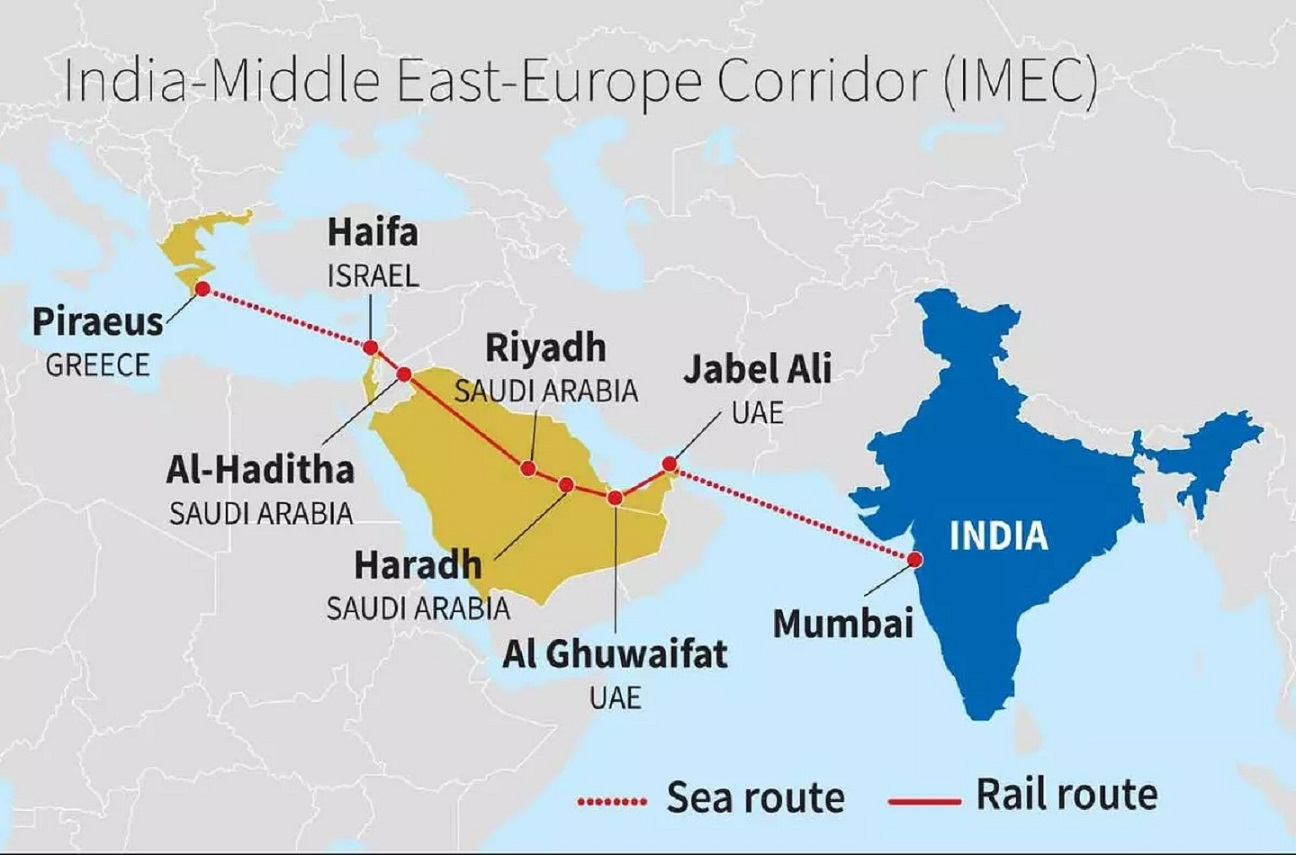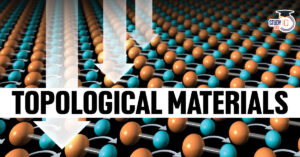Table of Contents
India-Middle East-Europe Economic Corridor (IMEC)
Context: Greek Prime Minister Kyriakos Mitsotakis stated that despite the Israeli conflict in Gaza impacting the India-Middle East Economic Corridor (IMEC) plans, India and Greece should continue their commitment to this “peace project”.
About IMEC

|
About IMEC |
|
| Signatories | India, United States, Saudi Arabia, United Arab Emirates, European Union, France, Germany, Italy. |
| Goals |
|
| Components |
|
| Part of | Partnership for Global Infrastructure Investment (PGII) |
Significance
Political Significance
- Counter to China’s BRI: IMEC offers an alternative to BRI’s “debt trap” and expansionist policies.
- Challenge China’s Middle East influence: Offers an alternative to China’s growing influence in the region.
- Promote Middle East stability: Aims to unite the region and avoid future conflicts.
- Normalise diplomatic relations: Could lead to improved relations between regional nations, including Israel and Saudi Arabia.
- Reduce dependence on Suez Canal: Provides an alternate trade route bypassing congested and potentially risky areas.
- Expand G20’s role: Strengthens G20 as a counterbalance to China and Russia’s dominant political forces.
Economic Significance
- Boost trade and jobs: Increases trade of goods, clean energy, and services, promoting economic growth and job creation.
- Infrastructure development: Addresses infrastructure gaps in lower- and middle-income nations.
- Green and digital connectivity: Includes infrastructure for electricity, hydrogen, and high-speed data, promoting sustainability and digital integration.
- Enhanced regional connectivity: Improves trade, prosperity, and overall connectivity within the region.
We’re now on WhatsApp. Click to Join
Cryogenic Engine
Context: ISRO’s CE-20 cryogenic engine for Gaganyaan’s LVM3 rockets passes human-rating tests.
About CE-20 Cryogenic Engine
- Developer: Liquid Propulsion Systems Centre (LPSC), part of the Indian Space Research Organisation (ISRO)
- Purpose: Powering the upper stage of the LVM3 launch vehicle
- Cycle: Utilises a gas-generator cycle, a first for Indian cryogenic engines.
- Propellants: Liquid hydrogen and liquid oxygen
Cryogenic Engine
- Complexity: Technically challenging due to propellants stored at extremely low temperatures (-183°C for LOX, -253°C for LH2).
- Efficiency: Despite complexity, very efficient, providing more thrust per kilogram of fuel than traditional options.
- Propellants: Typically uses liquid oxygen (LOX) and liquid hydrogen (LH2).
- Function: LH2 acts as fuel, reacting with LOX (oxidizer) to create thrust.
- Operation: Continuous booster pumps push these liquids into the combustion chamber for ignition.
|
About Gaganyaan Mission |
|
| About | The Gaganyaan mission is India’s first human spaceflight mission. It is scheduled to launch in 2025 and will carry three Indian astronauts to Low Earth Orbit (LEO) for a period of five to seven days. |
| Objectives |
|
| Aim | To launch a human crew into a 400 km orbit and return them safely to land in Indian sea waters as a demonstration of human spaceflight capability. |
| Launch Vehicle | GSLV Mk III, also called the LVM-3 (Launch Vehicle Mark-3) |
| Payloads | Consist of:
|
India’s Smartphone Exports
Context: India’s smartphone exports have increased from 1% to 2.5% in the last decade.
Key Data And Points
- Target: India aims to export 600 million mobile phones worth $110 billion by 2025, as per the National Policy on Electronics 2019.
- Current Reality: Exports hovering below $10 billion, falling short of target.
- Domestic Consumption: Significant portion of Indian-made smartphones are consumed domestically.
- High Import Tariffs: India charges 20% tax on chargers and circuit boards, potentially hindering competitiveness.
- Vietnam’s Growth: Before 2010, both India and Vietnam had less than 1% export share.
- By 2022, Vietnam’s export share rose to 12%, while India’s was a little over 2.5%, ranking seventh.
- US Market: Vietnam doubled its share in US smartphone imports (18% in 2022) while India’s share is negligible.
- UAE & Germany: India’s share in smartphone imports is growing in these markets, while Vietnam’s is declining.
- Regional Export Leaders in India: Kancheepuram (Tamil Nadu), leads in smartphone exports, contributing to nearly 38% of India’s total mobile exports.
- Other significant regions include Gautam Buddha Nagar in Uttar Pradesh and Kolar in Karnataka.
Fair and Remunerative Price (FRP)
Context: The Cabinet Committee on Economic Affairs (CCEA) chaired by Prime Minister Narendra Modi approved the Fair and Remunerative Price (FRP) of sugarcane for Sugar Season 2024-25 at ₹ 340/quintal at a sugar recovery rate of 10.25%.
About Fair and Remunerative Price (FRP)
What is it?
- Minimum price sugar mills must pay farmers for sugarcane.
- Ensures farmers receive a fair return, regardless of sugar mill profits.
- Applies uniformly across India.
Who determines it?
- Union government: Cabinet Committee on Economic Affairs (CCEA)
- Based on recommendations from the Commission for Agricultural Costs and Prices (CACP)
How is it calculated?
- Considers various factors:
- Cost of production for farmers
- Demand and supply of sugarcane
- Domestic and international sugar prices
- Comparison with prices of other crops
Benefits:
- Guaranteed minimum income for sugarcane farmers
- Encourages stable sugarcane production
- Promotes fair trade practices in the sugar industry
Related information:
- Some states offer additional State Advised Prices (SAP) on top of FRP.
- FRP is determined under the Sugarcane (Control) Order, 1966.
INDUS X
Context: The second edition of INDUS X Summit was conducted in New Delhi.
About INDUS X
Basic Information
- Full form: India – U.S. Defense Acceleration Ecosystem (INDUS-X)
- Inception: Launched in June 2023
- Objective: INDUS-X aims to enhance the strategic technology partnership and defence industrial collaboration involving the governments, business sectors, and academic institutions of India and the United States.
- Guiding Bodies: The initiative is spearheaded by India’s Innovations for Defense Excellence (iDEX) and Ministry of Defence, and US Department of Defence (DoD) in the U.S.
Key Activities
- Initiatives: INDUS-X encompasses various activities including joint prize challenges for startups, roundtable discussions, mentor-protege programs linking major companies and startups, and the establishment of a Senior Advisory Group, among others.
Strategic Importance
- This initiative is a progression of the commitment made by theS. and Indian National Security Advisors in January 2023.
- Connection to iCET: They pledged to initiate an “Innovation Bridge” that would link U.S. and Indian defence startups, as a part of the U.S.-India initiative on Critical and Emerging Technology
| Overview of iDEX Framework |
Objectives
Defence Innovation Organization (DIO)
|


 Topological Materials: The Future of Qua...
Topological Materials: The Future of Qua...
 China’s Deep Sea Station in South Chin...
China’s Deep Sea Station in South Chin...
 Project ICE-CRUNCH: India-Switzerland Co...
Project ICE-CRUNCH: India-Switzerland Co...





















